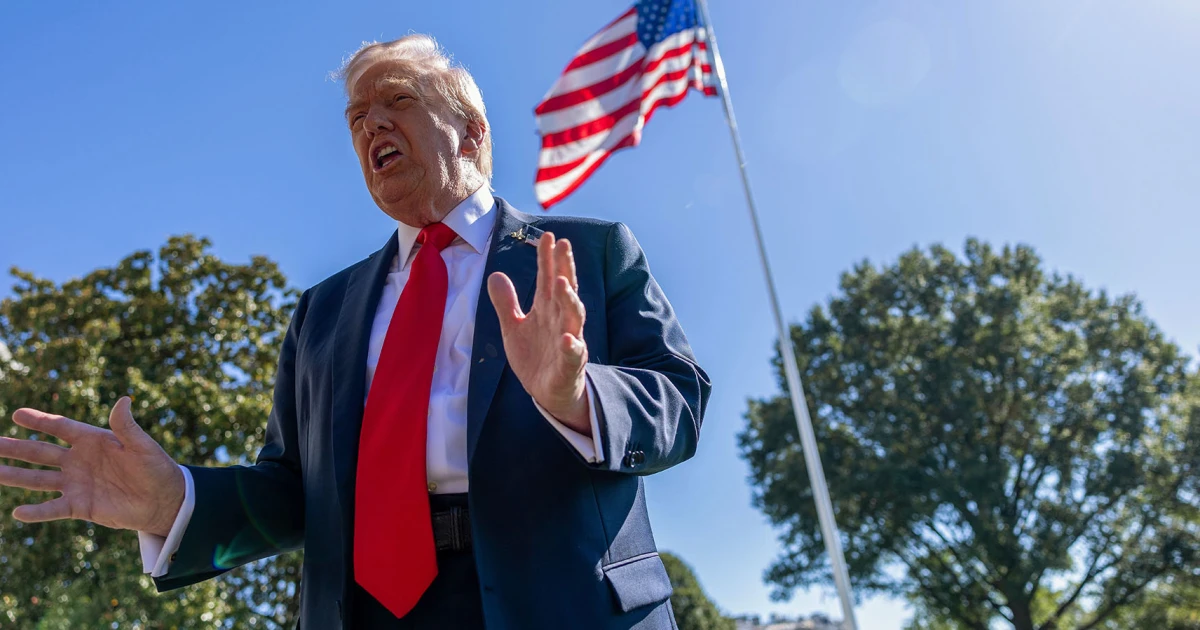
When the government shuts down, Congress usually takes the blame.
Since the negotiating tactic first emerged in the 1970s, it’s usually been lawmakers from the opposing party of the president who have used it to try to extract a concession or just take a stand.
But early polls suggest Americans are more likely to blame President Donald Trump — and he may have only himself to blame for that situation.
Since starting his second term, Trump has put himself at the center of every political fight, even weighing in on broadcast networks’ choice of late-night talk show hosts. But this same political showmanship may be leading some Americans to assume he’s also at the center of this showdown.
Over the weekend, Democrats continued pushing that message, launching a political ad blaming Trump and congressional Republicans for the federal impasse and going on television to defend their decision to vote against funding the government.
Democrats also seem to be benefiting from having chosen the right issue.
Democrats also seem to be benefiting from having chosen the right issue: extending Affordable Care Act tax credits that would keep health insurance premiums from skyrocketing for millions of Americans.
A poll taken days before the shutdown began found that three-quarters of adults want Congress to extend the Affordable Care Act tax credits, including roughly 60% of self-described MAGA-aligned Republicans.
Trump and congressional Republicans have sought to brand the standoff as a “Democrat shutdown.”
Less than 24 hours after the federal impasse began, the White House published a government shutdown clock on its website captioned “Democrats have shut down the government.” Other federal agency websites added banners to their landing pages that laid blame for the shutdown at the feet of “the Radical Left in Congress.” Furloughed Education Department employees told NBC News that their out-of-office messages were altered to include more partisan talking points blaming Democratic senators for the lapse in appropriations.
Trump also retreated from public view, holding no open press events outside of a Navy 250 celebration Sunday. The goal may have been to keep him on the sidelines so that Republicans could focus the public’s attention on the Democratic senators who voted against funding the government.
But the spotlight proved too alluring for Trump, who was soon reposting on social media a video apparently generated by artificial intelligence parodying the classic rock song “(Don’t Fear) The Reaper” and commenting that he would be meeting with Office of Management and Budget Director Russell Vought to decide which “Democrat Agencies” should be shut down, perhaps even permanently.
Rather than letting the focus remain on Democratic resistance to reopening the government, it shifted back to Trump and how his administration could exploit the impasse for partisan gain.
Since the shutdown began, Trump has:
Threatened to fire federal workers en masse, although in past shutdowns they were only temporarily furloughed
Targeted infrastructure projects in Chicago and New York
Threatened to withhold funding for “Democrat things” he doesn’t like
Deployed the National Guard to Oregon and Illinois, over the objection of Democratic state officials
In defending the looming federal layoffs, which administration officials have said could begin this week, Trump inaccurately told reporters that Democrats were to blame.
“The Democrats are causing the loss of a lot of jobs with their shutdown. It’s their shutdown, not our shutdown. It’s their shutdown,” Trump said.
Trump clearly intended to use these moves to push Democrats to fold. But they had the side effect of generating headlines about Trump, putting him at the center of the action.
Democratic leaders have said they are hard-pressed to reopen the government before extracting specific, written concessions from Republicans, because of recent history. During the last funding fight, Democratic leader Chuck Schumer relented and voted to keep the government open only for Republicans to bypass Democrats and rescind billions in agreed-upon spending in a party-line vote months later.
Plus Democratic voters for months have been craving a fight from elected officials, and more aggressive posturing against Trump in this moment could help them ahead of high-profile elections this year in New Jersey and Virginia.
There’s also history. Trump oversaw in 2019 the longest government shutdown on record — a whopping 35 days — and didn’t necessarily emerge victorious.
His approval rating dropped to near record lows, Americans largely faulted him for the impasse and he failed to secure the border wall funding that prompted the ordeal in the first place. Democratic efforts to win the public’s favor were buoyed by Trump himself, who said he’d be “proud” to shut down the government and planned to “take the mantle” of shutting it down.
Shutdowns typically are politically expedient for anyone involved. But Democrats do have a convincing argument to take home about why they feel the need to remain in this fight.